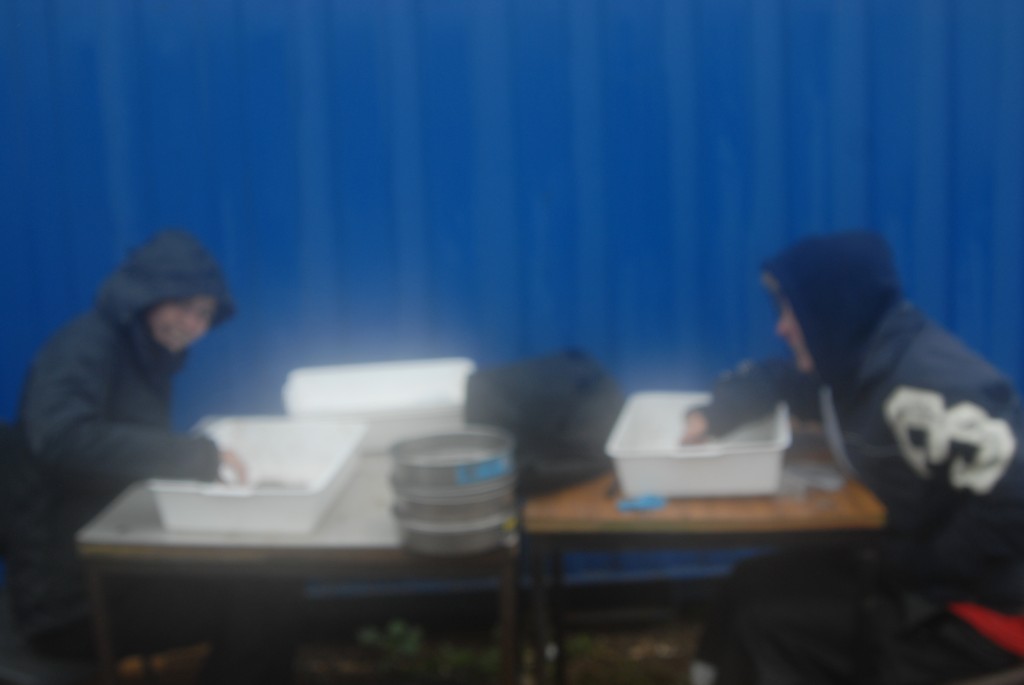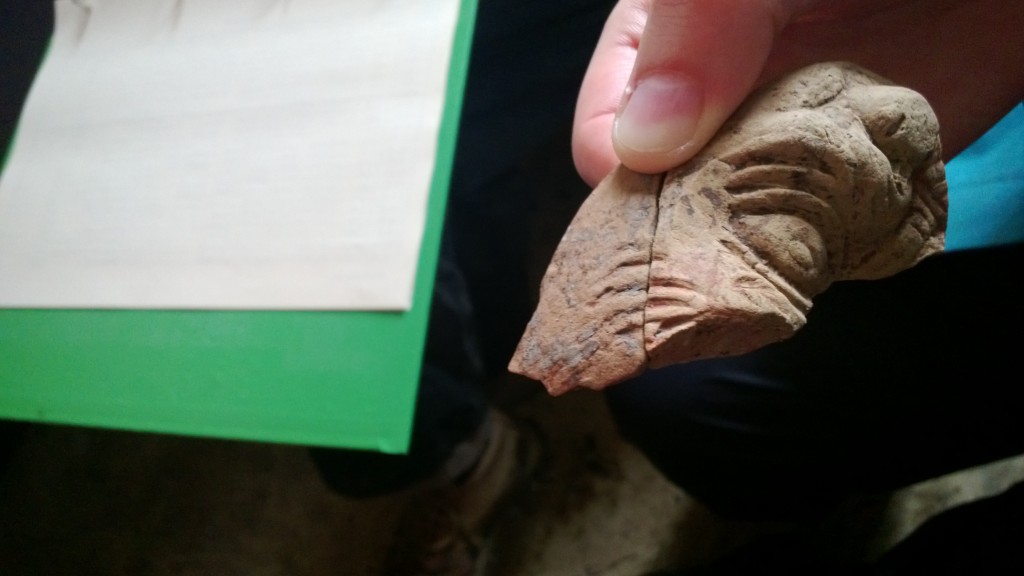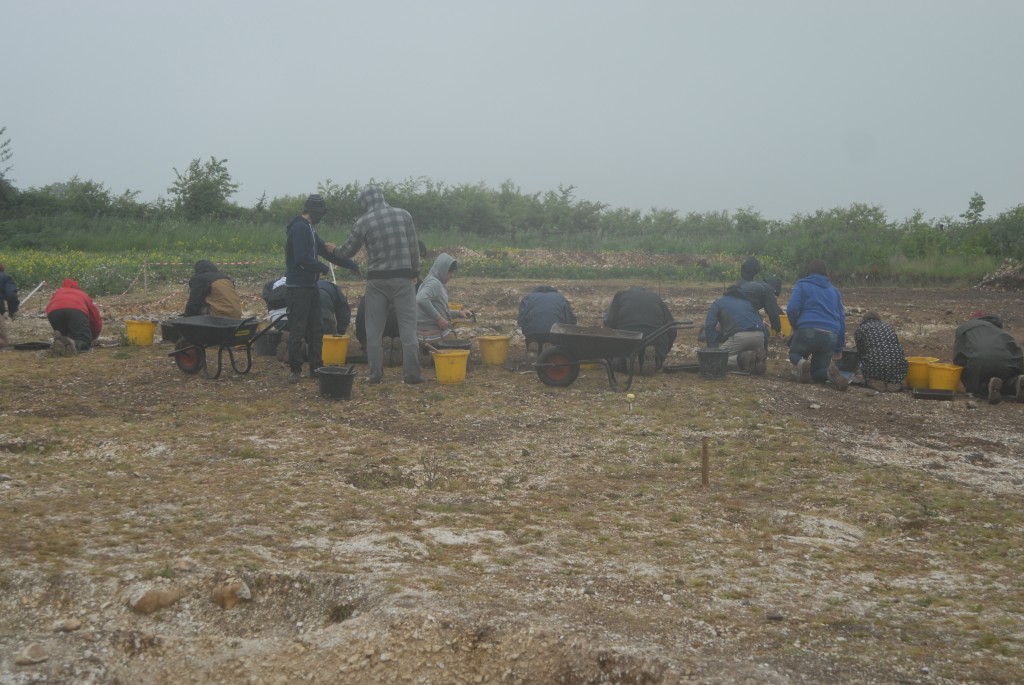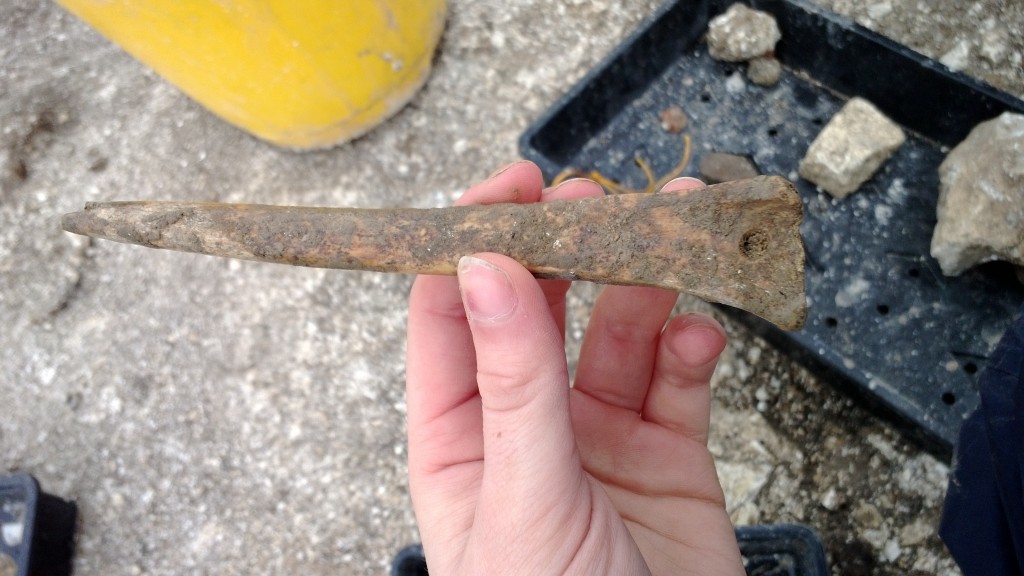Tuesday 11th June 2013
Day 10- More Intriguing Pottery and environmental sampling
The rain overnight has helped to soften the soil and has allowed further definition of features. Another burst of cleaning back was undertaken, in order to fully quantify the number of features available to dig before the excavation season is over. In addition, a number of Masters Students joined the site today to speed up excavation of features and to assist with cleaning back. Pictured below are a number of people on site cleaning back.
It is not just digging that occurs on site, but a number of activities, including geophysics, finds processing and environmental sampling. In general for environmental sampling, 2 samples are taken from each feature and undergo a rigorous process of sorting. Initially the samples are put through a flotation tank and the resulting product is then dried on muslin. Once dry, it is put through dry graded sieving. The sieving is done once the material is dry as it lessens the chances of cross-contamination and it retrieves the useful information that is not always collected by flotation. Pictured below are students Tilly Cammegh and Rebecca Bradley undertaking dry grade sieving of samples.

Students Tilly Cammegh and Rebecca Bradley undertaking dry grade sieving of samples, courtesy of Bournemouth University.
From the same feature as yesterday, more of the interestingly decorated pottery was recovered by student Abigail Golding. The first fragment found fits perfectly with the portion of pottery fragment with the portion of face with it, as pictured below:

The two pottery fragments that were recovered by student Abigail Golding and fit together! Courtesy of Bournemouth University.
Later in the day, two other fragments from the same pot were also recovered and are thought to be part of the handle from the vessel.
Nearby this feature, in another Iron Age pit, Bristol University student Jane Randall recovered a purposefully worked sheep tibia. The style of the working and the holes punched through the bone is indicative that it was worked possibly for weaving purposes. The possible “weaving bone” is pictured below.

